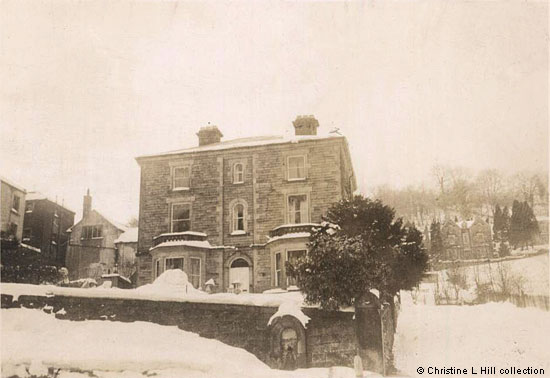|
Images Index> Matlock Bath, 20th and 21st Century Images> This page |
| Matlock Bath: Winter Scenes, 1947 |
| Matlock Bath : Twentieth Century Photographs, Postcards, Engravings & Etchings |
|
|
||||||||||||
In early March 1947 The Times reported that in the north Midlands frost had been recorded on every day and night since January 10th. The main roads in both Derbyshire and Nottinghamshire were blocked and there had been no general thaw in the area since early January. Snow had fallen, at one period, on 25 successive days[1]. The Derbyshire newspapers carried many stories about the difficulties being experienced, with photographs of really high snow drifts throughout the county[2]. The Midland General Bus Company were forced to cancel their service between Matlock and Alfreton at the beginning of February because of the drifting snow, although County Council workmen were trying to clear the road[3]. This route remained troublesome throughout the severe weather. When the bus service restarted there were chains on the tyres. Whilst the road conditions were considered to be the worst of the winter at that stage, the Matlock to Alfreton and the Cromford to Wirksworth roads were both clear on 7th February when a heavy fall of snow in the north of the county threatened the attempts to reach villages that had been cut off for several days[4]. Matlock's quarrymen, who had been out of work for a fortnight, were by then helping to clear the snow. They were additional to the 3,000 Council workers from across the county who were equipped with shovels, snow ploughs and bulldozers[4]. Further assistance came from both prisoners of war and soldiers who were brought in to help. One gang of snow clearers managed to cut their way through to Riber Castle so that Ministry of Food lorries could reach the supplies still stored there[4]. A number of hamlets and villages, including Riber, were still cut off on 10 February and the roads from Matlock to both Chesterfield and Alfreton were again impassable[5]. Twelve days later a number of roads in the Matlock area were blocked once more and buses were unable to run on some of the more hilly routes. It was proving impossible to deliver mail to some of the isolated hamlets and farms in the district. Although few homes had telephoned installed in 1947, more than a hundred faults were reported in Matlock, Matlock Bath and the surrounding district and elsewhere in the county there were reports of rabbits chewing the fallen telegraph wires[6]. Things were to get worse. On the night of 25-26 February blizzards again swept the county, with high winds causing drifting which yet again blocked the roads and cut off villages. The snowfalls varied from four to eight inches but the wind created drifts averaging three feet in depth. This blizzard was by far the worst of the winter in the Matlocks and householders woke up on 26th to find they needed to tunnel their way out through drifts four feet deep. In some districts milk collections from the farms were impossible, which in turn would have affected deliveries to households, assuming the milkmen could get through[7]. This was a time when many household commodities, such as bread, milk and coal, were delivered to directly to the door. The lack of such deliveries would have been a real hardship. Below are more private family photographs of Portland House on Clifton Road taken by Cyril Edmonds and another of High Tor by Frank Clay, showing more of how the 1947 blizzards affected Matlock Bath.
|
|||||||||||||
Photographs of Derby Road, Clifton Road and Portland House taken by Cyril Edmonds in the collection of, provided by and © Christine Leila Hill Photograph of High Tor and Dale Road taken by Frank Clay and © Ann Andrews. Research provided by and © Ann Andrews. Intended for personal use only |
|||||||||||||
|
[1] "The Times", 8 Mar,
1947 |










 See
Famous British Winters
See
Famous British Winters